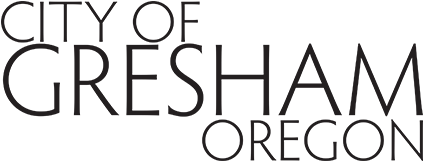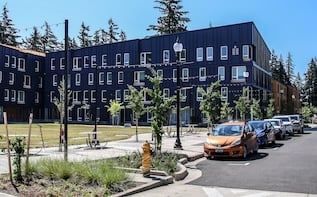- Home
- Urban Design and Planning
- Planning Projects
- Environmental Overlay Code and Map Update
Environmental Overlay Code and Map Update
Environmental areas or "overlays" protect natural areas during development. This includes streams, wetlands, floodplains and hillsides.
The City's updated code makes development requirements easier to follow in these environmental areas.
Completed project goals
- Updated City code in 2021 to meet state and federal regulations.
- Improved development guidelines to help protect natural areas.
- Simplified mapping to identify environmental zones or overlay areas.
- Streamlined the review and permitting process.
- Project Status and Updates
- Project Overview
- Project Documents
- Contact
The adopted code went into effect in January 2021.
What are environmental overlays?
Environmental overlays are extra levels of protection in certain areas of the city to protect natural resources such as streams, wetlands, and hillsides. Together, the systems provide a network of green areas, wildlife habitat, streams, and forested slope protections.
Before this project, Gresham had three environmental overlays and two environmental zones:
- Floodplain Overlay District, revised in 2019 based on new Federal Emergency Management Agency (FEMA) data.
- Hillside Physical Constraint Overlay District that protects steep slopes and hillsides.
- Habitat Conservation Area Overlay District that protects streams and wetlands in most of Gresham.
- Environmentally Sensitive Restoration Area in Pleasant Valley.
- Environmentally Sensitive Resources Area in Springwater.
This project updated hillside, steep slope, stream and wetland, and habitat protections.
Broad changes
- Simplified mapping, using the latest data available.
- Clear standards within the resource areas.
- Introduction of a temporary disturbance area.
- More flexibility in mitigation design.
- Hillside boundaries aligned more tightly with the newest risk data.
Natural resource protections
- Greater protection closer to streams.
- Introduction of an in-lieu fund to allow for off-site mitigation.
- Robust density transfer to incentivize avoiding resource areas.
- Reduction of permanent disturbance areas.
- Easily enforceable boundaries.
- Promotion of biodiversity in mitigation efforts (more climate resiliency).
- Increased geotechnical review of development in highest-risk areas.
Hillside and Geologic Risk Overlay
There are no additional property restrictions if an owner is:
- Altering or replacing structures but not changing the building footprint.
- Moving less than 10 cubic yards of earth outside the Highly Sloped Area.
- Building a retaining wall under 4 feet high outside the Highly Sloped Area.
Some changes may need a geotechnical engineer to approve the design and may require a land use permit.
Natural Resource Overlay
There are no additional new property restrictions if:
- A lot developed with a home is at least 5,000 feet and far enough away from a stream or wetland.
- A property is separated from the resource by the road.
Some changes may need a land use permit if you have a very large lot or a stream or wetland on your lot.
Most properties in the Natural Resource Overlay (NRO) were previously in a Habitat Conservation Area (HCA) or Environmentally Sensitive Resource/Restoration Area (ESRA).
Trees and vegetation
Inside the overlay, most trees that are not part of a landscaped area will need to be preserved. The City will issue permits for the removal of hazardous trees.
Meetings
2020
- Jan. 14 - Neighborhood Coalition presentation
- Jan. 27 - Planning Commission presentationand memo
- Sep. 8 - Neighborhood Coalition presentation
- Sep. 14 - Development stakeholder presentation
- Sep. 14 - Planning Commission presentation
- Sep. 16 - Environmental stakeholders presentation
- Sep. 17 - Public work sessions presentation
- Nov. 23 - Planning Commission hearing presentation and minutes
- Dec. 15 - City Council hearing presentation recording
Mailers
Terra Wilcoxson
Senior Planner
Terra.Wilcoxson@GreshamOregon.gov or 503-618-2082





